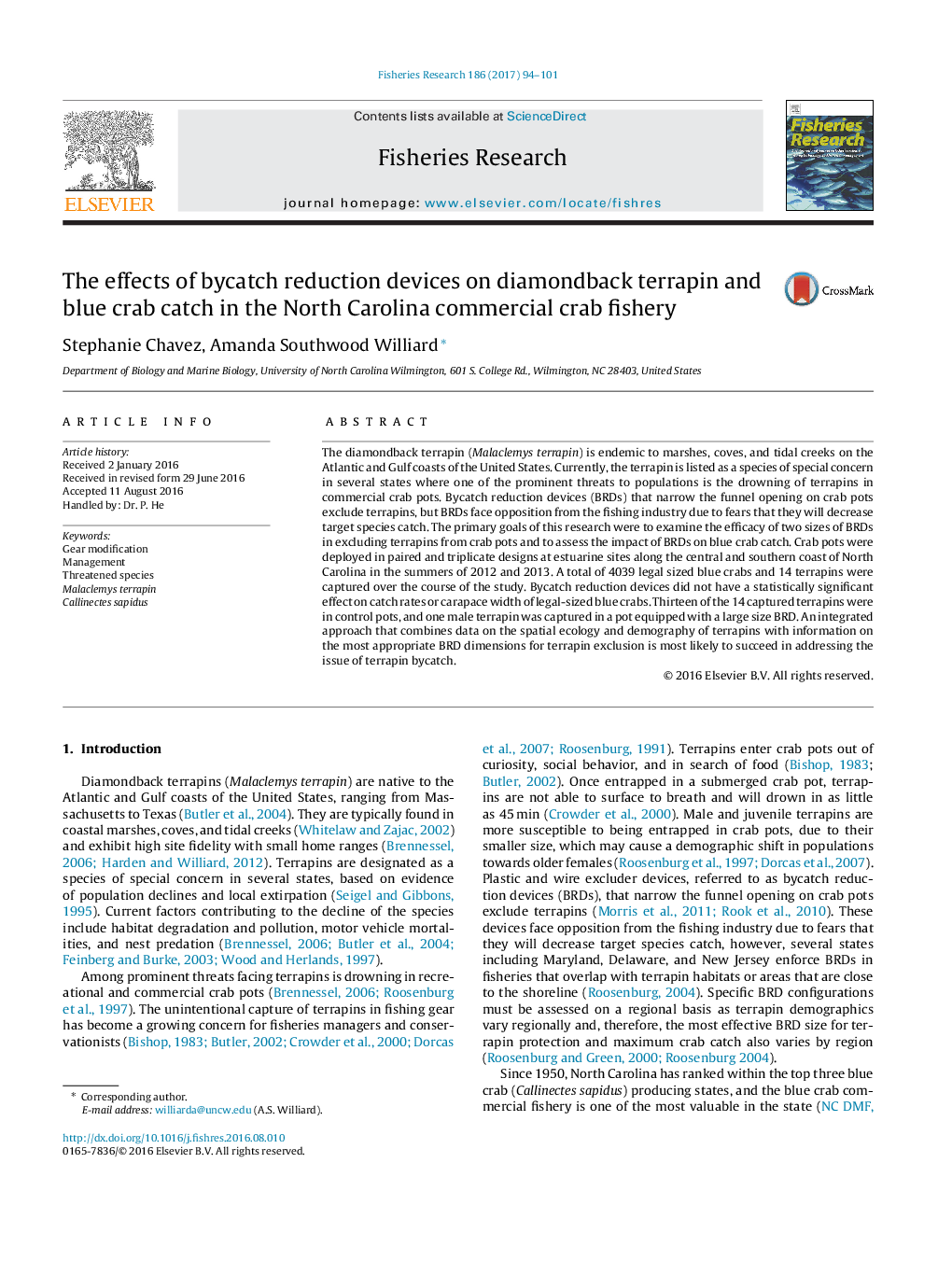| Article ID | Journal | Published Year | Pages | File Type |
|---|---|---|---|---|
| 4542604 | Fisheries Research | 2017 | 8 Pages |
The diamondback terrapin (Malaclemys terrapin) is endemic to marshes, coves, and tidal creeks on the Atlantic and Gulf coasts of the United States. Currently, the terrapin is listed as a species of special concern in several states where one of the prominent threats to populations is the drowning of terrapins in commercial crab pots. Bycatch reduction devices (BRDs) that narrow the funnel opening on crab pots exclude terrapins, but BRDs face opposition from the fishing industry due to fears that they will decrease target species catch. The primary goals of this research were to examine the efficacy of two sizes of BRDs in excluding terrapins from crab pots and to assess the impact of BRDs on blue crab catch. Crab pots were deployed in paired and triplicate designs at estuarine sites along the central and southern coast of North Carolina in the summers of 2012 and 2013. A total of 4039 legal sized blue crabs and 14 terrapins were captured over the course of the study. Bycatch reduction devices did not have a statistically significant effect on catch rates or carapace width of legal-sized blue crabs. Thirteen of the 14 captured terrapins were in control pots, and one male terrapin was captured in a pot equipped with a large size BRD. An integrated approach that combines data on the spatial ecology and demography of terrapins with information on the most appropriate BRD dimensions for terrapin exclusion is most likely to succeed in addressing the issue of terrapin bycatch.
